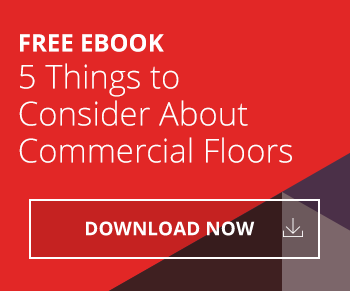Have you ever actually thought about carpet maintenance? Chances are, probably not.
Carpet is a heavy textile that lines the floors of where we live, work, and play. It's found everywhere: hospitals, living rooms, offices, and the list goes on. Think about the people that walk on it everyday: kids, colleagues, customers, you. Carpet absorbs what we bring indoors from the outside: odors, dirt, dust. This is true for the workplace and your home.
But, if we do think about carpet maintenance, when do we do it? It's usually reactionary. If it's dirty; we clean it. If it's worn; we replace it. If it gets boring; we sometimes change it. But what about in the workplace?
For those of us who are responsible for ensuring the quality of floors in the workplace, carpet maintenance may be done in-house or outsourced. We've all heard that prevention is better than a cure, and this could not be any more accurate than when it comes to preventative carpet maintenance.
Preventative carpet maintenance is simply taking proactive steps against reducing the wear and tear on your flooring investment. Removing a pound of dirt is estimated to cost $500 once inside a building. By keeping this out of your workplace, you can reduce your carpet maintenance costs and create a healthier working environment.
Below is a checklist of things to consider regarding preventative carpet maintenance:
Use exterior and interior matting. All companies have high traffic areas, which can draw in soil and dirt from the outside. By using floor mats and choosing easy-to-clean flooring around workplace entrances, it reduces the wear on the carpet in those areas. Creating a walk-off of 10-12 feet can greatly reduce this problem.
Use chair pads. The wheels on most office chairs can damage carpet. It can tear the fiber and can be costly to repair. By using chair pads, you can reduce the strain on carpet and eliminate potential expensive repairs. Chair pads can be purchased from any major office supplier or flooring experts.
Vacuum your carpet regularly. While it may seem like a "no brainer," having a regular vacuuming routine for your carpet can protect your investment and extend the look of your flooring. Without an adequate vacuum plan, the overall look of your facility will become unacceptable. It's also important to have a vacuum that can handle the size of your workplace. It's recommended to use a dual motor upright vacuum approved by The Carpet and Rug Institute (CRI).
Implement a repair program. When it comes to carpet, one of the most important things you can do is have a repair program in place before you install new carpet. Having a repair program ensures that should your carpet need to be replaced or repaired, having a professional ready to remedy the problem is the best way to take care of your investment.
While these are just a few things you should consider when thinking about carpet maintenance, it's best to consult with a professional to make sure all of your commercial carpet flooring needs are met.





Comments